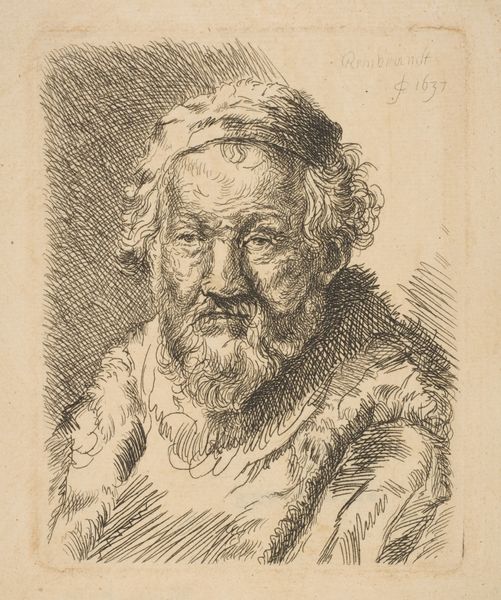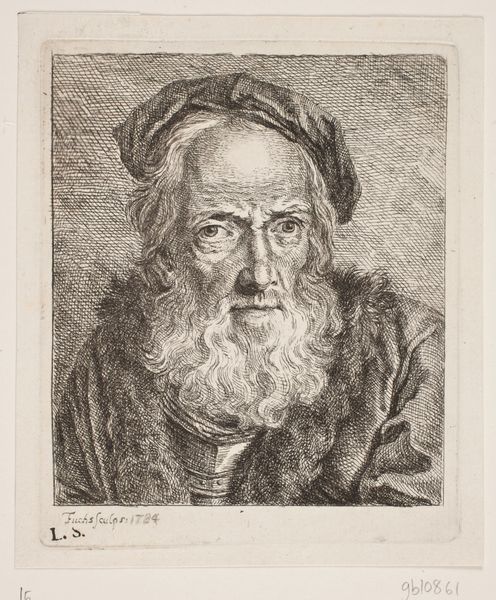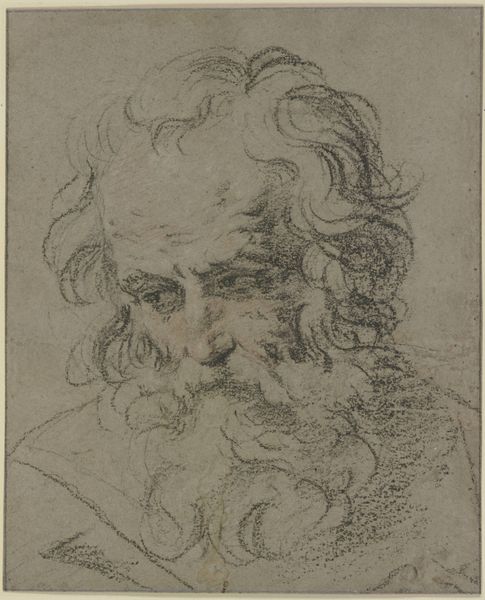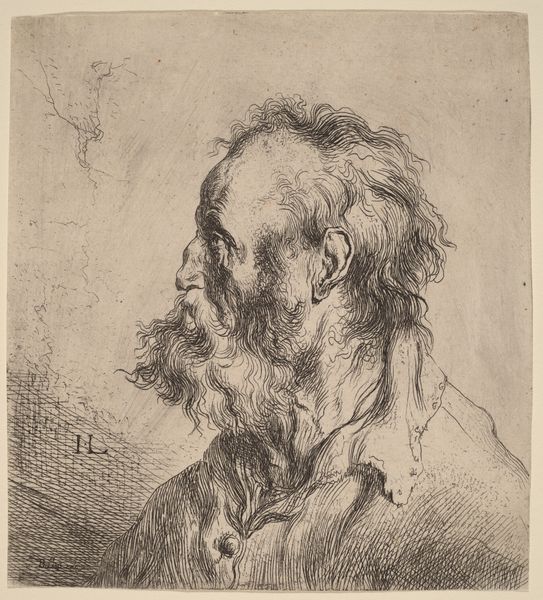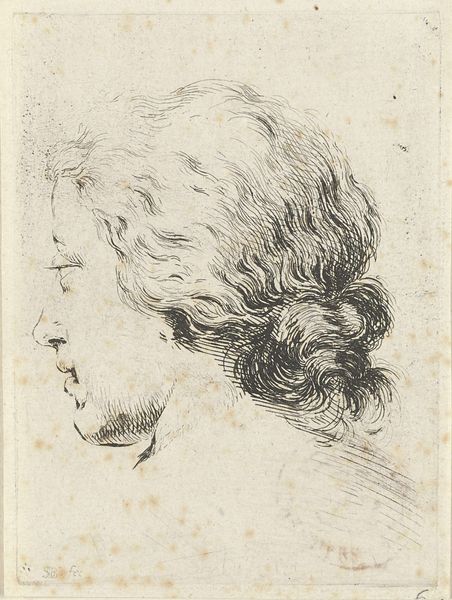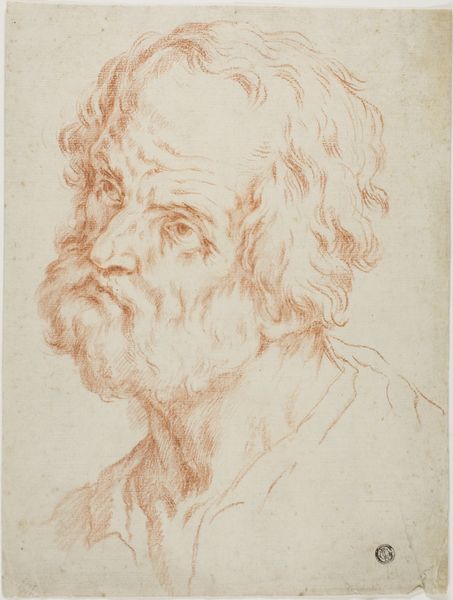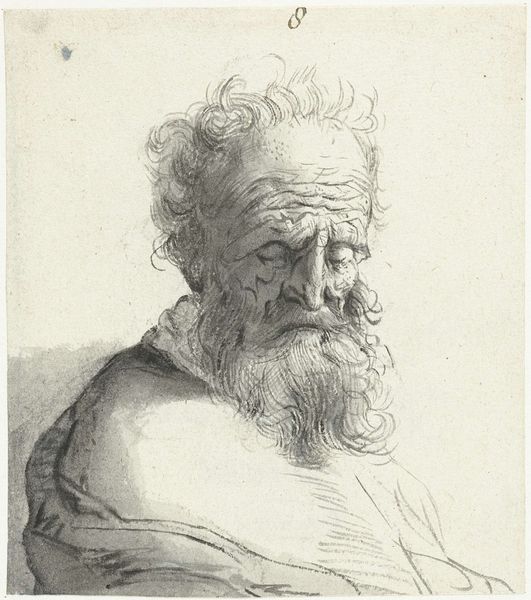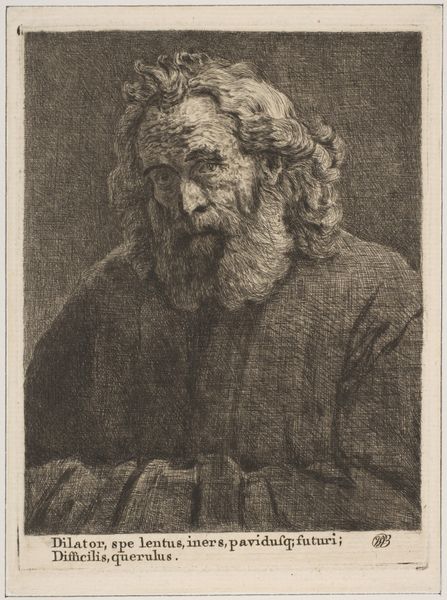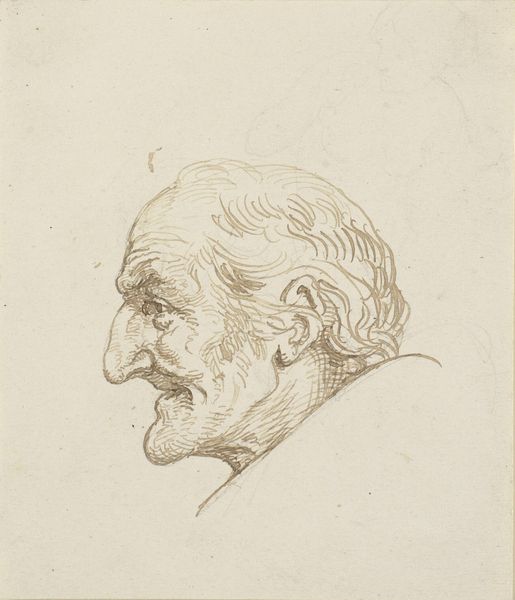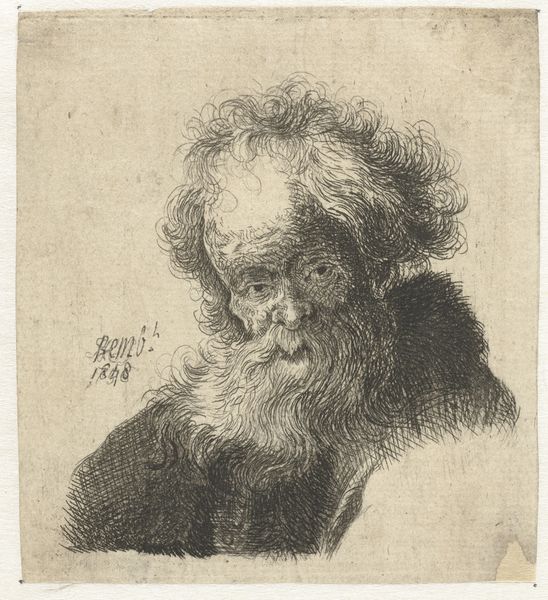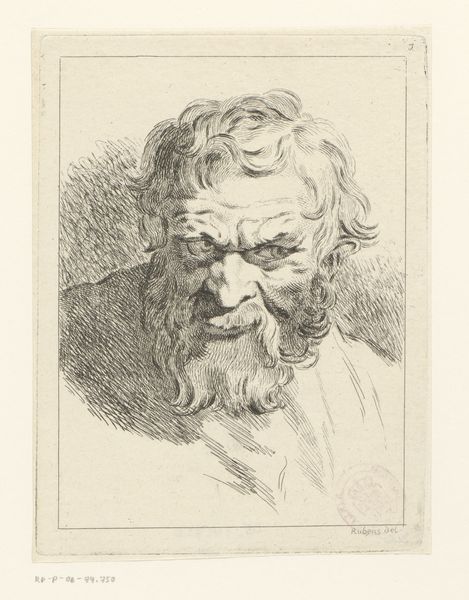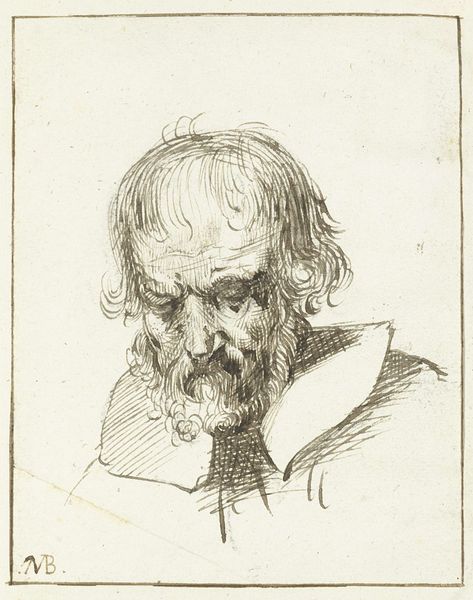
print, etching
#
portrait
#
baroque
# print
#
etching
#
realism
Dimensions: height 133 mm, width 102 mm
Copyright: Rijks Museum: Open Domain
Curator: This etching, titled "Buste van een oude man," created sometime between 1619 and 1656, is attributed to Salomon Koninck. It's quite striking, isn't it? Editor: Indeed. The immediacy of the etched lines, particularly in the depiction of the weathered skin, is captivating. You can almost feel the texture. What kind of market was there for a print like this at the time? Curator: Well, the proliferation of printmaking in the 17th century significantly altered artistic consumption. Prints made art more accessible and, crucially, more democratic. An image like this one would circulate among a growing middle class, contributing to an increasingly image-saturated public sphere. It wasn’t solely about elite patronage. Editor: That’s fascinating. Look closely; you can really see how Koninck varied the depth of his lines to create a tonal range – darker, more densely etched areas give the impression of deep shadow. One almost overlooks how much the print mimics the characteristics of drawings. It makes me consider the labor invested in creating these lines. Was he making it affordable to many? Or creating it for wealthy patrons seeking accessible pieces? Curator: Possibly both, in truth. There's clearly a great degree of care present. But given the baroque and realist leanings, prints like these functioned almost as character studies. People of all social strata engaged with prints, purchasing individual sheets, binding them into albums, and so on. The public performance of observing becomes so relevant here. How did Koninck, for instance, conceive of a print interacting with, shaping, the public eye? What function was this man, rendered in the copper and acid, thought to fulfill for those encountering him at the time? Editor: It’s amazing to consider the interplay between the handmade nature of etching and the potential for mass dissemination, challenging art boundaries and democratizing distribution. That’s powerful to ponder. It truly invites the viewers to study and really ask themselves “What does this man say about society, history, and ultimately myself?” Curator: I completely agree. It offers an incredibly powerful snapshot of artistic creation amidst significant social and political transformation.
Comments
No comments
Be the first to comment and join the conversation on the ultimate creative platform.
